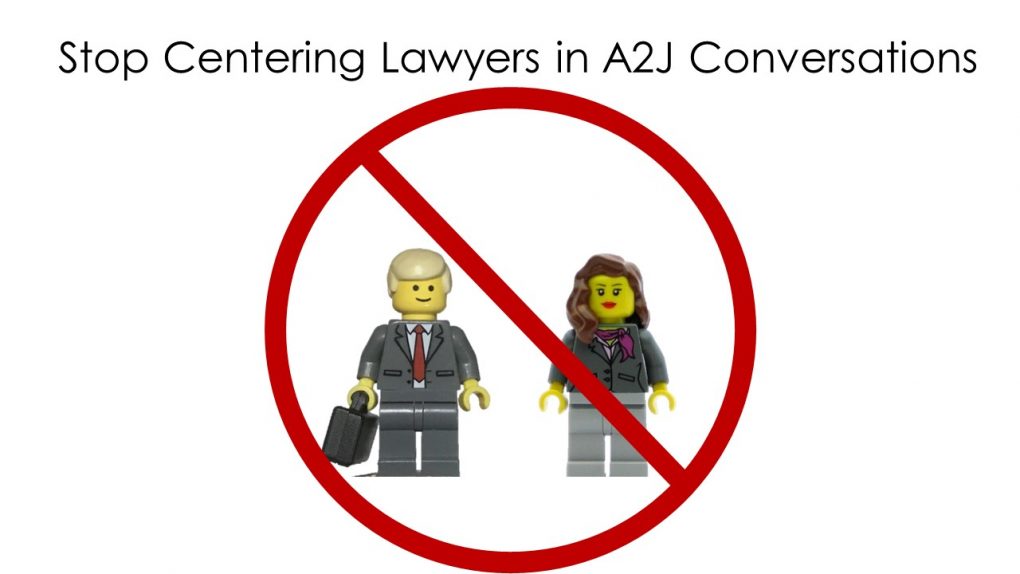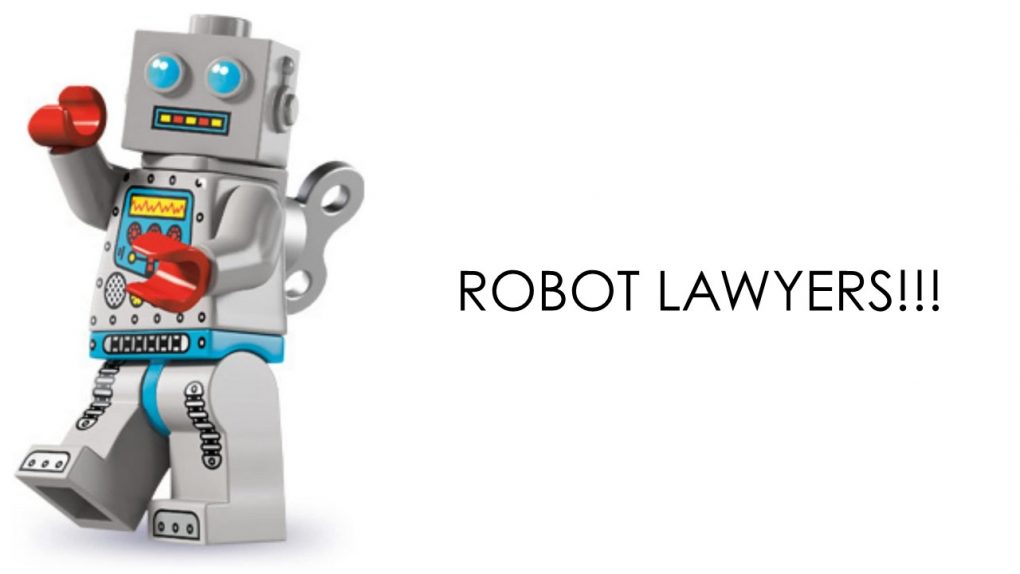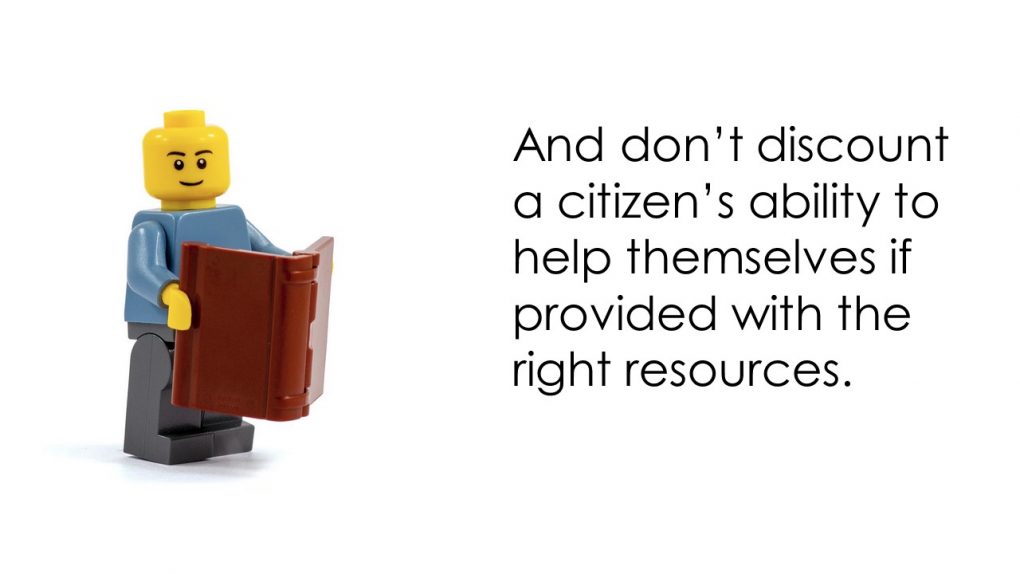I was very happy to see Bob Ambrogi recently highlight the disparities between the A2J and LegalTech worlds. My career lets me keep a foot in both worlds so this is a topic for which I Have Many Thoughts.
There are few things that I love more than telling people what to do, so here are a few suggestions on some ways legal tech and innovation professionals can assist in tackling A2J.
(Coincidentally I’m doing a talk tomorrow on A2J Tech for a law school class, This isn’t my presentation verbatim, but there’s just enough overlap in topics to use some of my slides as illustrations.)
First things first, what do we mean by Access to Justice? So many conversations about A2J start by trying to measure “the access to justice gap.”
We talk about how many people legal aid organizations have to turn away or how many people appear without an attorney in various types of litigation. Here’s the thing:
While I do not dispute that there are thousands – if not millions – of people that desperately need the assistance of an attorney, that’s just one type of access to justice failure. By concentrating on these stats, we (1) vastly undercount the access to justice crisis, and (2) mentally limit possible solutions to those that replicate or enhance human provided legal services.
When I think of Justice, I think of four arteries to access:
While there definitely is a place for lawyer work by humans or…technical replacements…
There’s also so many opportunities to help people that don’t require the full attorney-client relationship or the knowledge and professional posture of a barred attorney.
(Not to mention that attempting to replicate attorney services is not without…potential problems.)
Also, one thing to never forget:
With all of that being said, say you’re a legal tech or big law innovation person and you want to help. First of all, that’s great! Far too many in this world think that A2J is (a) nothing they can do anything about or (b) not their responsibility.
It’s tempting to immediately say “give them free technology!” While budgets and the monetary ability to acquire technology are definitely a problem, applying technology to a problem in non-profit settings is no different than for profit ones. Sing along if you know the words….
There’s a lot of change management and process design and user success operations that need to happen before and after acquisition. As the saying goes, free technology is like a free puppy, and getting technology to an organization is just a small part of getting to a working solution.
So as part of your firm’s or company’s pro bono efforts, consider reaching out to local or topically interesting non-profit justice organizations and offering your process improvement expertise. And then, if the situation warrants, move to offering tech. And then follow up to ensure successful adoption and use.
There’s many other types of innovation expertise (with possible tech add ons) that could be offered to non-profits and would be beneficial…data science, marketing, and research and document design immediately come to mind.
Don’t put that checkbook away…there still is a way to throw money at this issue if you don’t want to commit to a full change management process.
I, obviously, am a huge proponent of professional education and upskilling. While conference attendance generally provides expanded horizons and ideas for possibilities instead of hardcore skills, that’s still a really important take away and something useful for non-profit attendees to obtain! I would love to see more sponsored scholarships (registration, hotels, and travel) for non-profit workers to attend conferences like CLIO, TECHSHOW, and ILTA. Money for non-profits to obtain more practical training for employees would be great too.
Finally, I will forever be on my Free Law and Open Source Bullshit.
I started by saying “free technology is not the answer”, and it’s not. But… open technology and content may be. AN answer, at least.
I’ve dreamed of there being a non profit – funded by for-profit law and technology worlds – that supported the creation and maintenance of open source legal tech tools and openly licensed content (e.g. brief banks, template libraries, or even website explainers) for non-profit justice operations. There would be opportunities to donate content or code bases, expertise, and money. There’s still a lot of lobbying work to do to make primary law freely available as well.
And it may benefit you too…
That’s just three ideas on how to help. There’s definitely more, including some in Bob’s original price. This is just a small sample.
(Editorial note: this is my first blog post since I switched from Substack. Let’s see if my new set up works…)












Excellent post Sarah. Our non-lawyer members have been providing specialized legal services – to the same practice standard as regulated lawyers – for over 100 years. Doing, for example, over 100,000 real estate and mortgage finance transactions in the last year. ….Seems to have worked out well so far. (As I often have to remind lawyers who call me to complain.) Ron Usher, General Counsel, The Society of Notaries Public of B.C. (Canada)
By the way, OECD has some evolving definitions of access to justice that are not lawyer-centered in case ever useful. Ex:
‘the ability of individuals and businesses to seek and obtain a just resolution of legal problems through a wide range of legal and justice services. These services include legal information, counsel and representation, formal (e.g. courts) and alternative dispute resolution, and enforcement mechanisms’